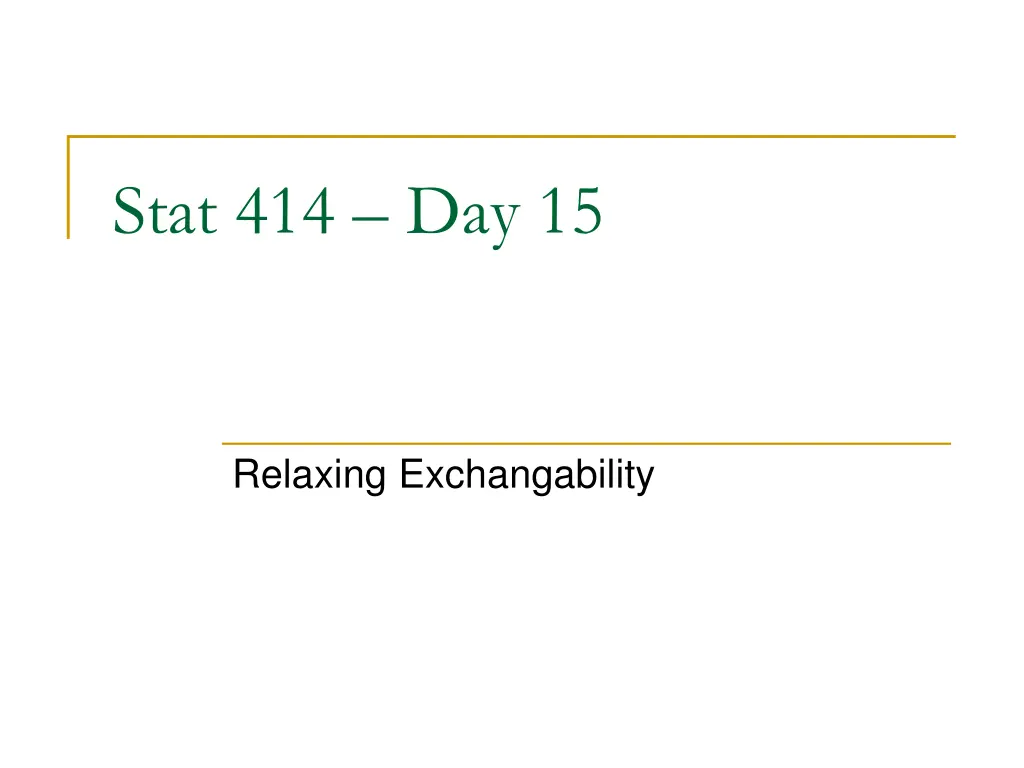
Understanding Longitudinal Data Analysis in Statistics
Explore key concepts in longitudinal data analysis such as variability, linear models, time trends, and model parameters. Discover how to interpret data and handle missing values effectively for in-depth statistical analysis.
Download Presentation

Please find below an Image/Link to download the presentation.
The content on the website is provided AS IS for your information and personal use only. It may not be sold, licensed, or shared on other websites without obtaining consent from the author. If you encounter any issues during the download, it is possible that the publisher has removed the file from their server.
You are allowed to download the files provided on this website for personal or commercial use, subject to the condition that they are used lawfully. All files are the property of their respective owners.
The content on the website is provided AS IS for your information and personal use only. It may not be sold, licensed, or shared on other websites without obtaining consent from the author.
E N D
Presentation Transcript
Stat 414 Day 15 Relaxing Exchangability
Logistics HW 5/6 graded and returned Scores updated in PolyLearn Lowest HW score dropped One more HW next week (logistic) Second project progress report Review material posted Review Q&A
HW 5 key ideas Using Level 2 variables to explain variation in intercepts, slopes (two-stage analysis) Level 1 (e.g., within school, person) vs. Level 2 variation (e.g., between schools, person) Summarize model Fixed effects (e.g., type of audience, interactions) and Random effects
HW 6 key ideas Variability explained by time trend Residuals = Unexplained variation about the time trend Evaluation of linearity of time trend Adding a level 2 variable Does it explain variation in intercepts Variable becomes part of the intercept Does it explain variation in slopes With interaction, variable becomes part of slope coefficient How impact charter effect Change in coefficient, interaction? Interpreting all of the parameters
Last Time Longitudinal data Repeat observations on same individual Missing values aren t really a problem Wide vs. Long format Include time as Level 1 variable Time-dependent (Level 1) and Time-invariant variables (Level 2 and higher) Assumption: Linear trend Nonlinear trend Quadratic (vs. random slopes) Piecewise linear
Linear model 6 parameters Quadratic but only random intercepts 5 parameters
Piecewise linear ???= ?0+ ??+ ?1????0809 + ?2????0910 + ???
